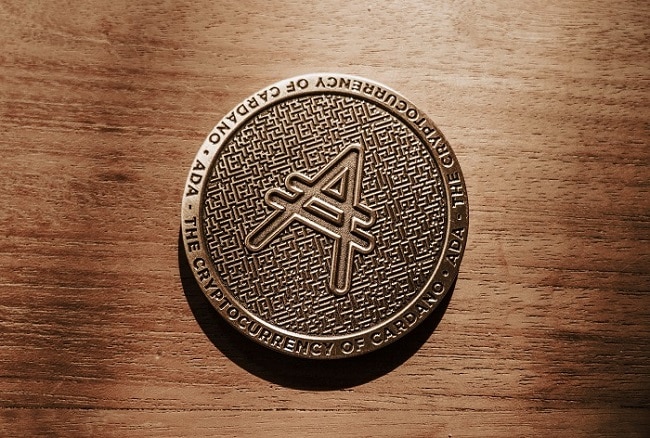Altcoins are all cryptocurrencies that were launched after the release of Bitcoin. The term “altcoin” consists of coin and alt (short for alternative). It was first used on BitcoinTalk, one of the largest specialized cryptocurrency market forums. After that, the term spread thanks to the Wall Street Journal. Thus, altcoins are all cryptocurrencies that were launched after the release of Bitcoin (BTC).
Altcoins were created as an alternative to the first cryptocurrency. They became trendy so that you can exchange cryptocurrency for altcoins on many platforms.
Altcoins vs Bitcoin
Bitcoin has quite a few disadvantages that complicate the mining of the coin and do not allow it to make a universal means for all processes in the digital space.
First of all, these transactions should be shorter. To speed them up, you need entirely different algorithms. Moreover, in most Bitcoin blocks, all processes are also slow.
Secondly, it is a problem of complete anonymity, which BTC cannot provide. There is an opportunity in which both parts of the chain – the receiver and the sender of coins – can be calculated. Altcoins have additional encryption mechanisms, which makes them more secure than Bitcoin.
Thirdly, there is the problem of Bitcoin mining. This process becomes more complicated every year, and you need more capabilities and resources to create new blocks. Developers of alternative coins can apply completely different protocols that simplify the coin mining process without using expensive equipment.
Algorithms for creating altcoins
To predict Altcoins’ future, you should гunderstand the process.
Even though there is an extensive list of altcoins, the creation of cryptocurrencies mainly follows two algorithms: Proof-of-Work or PoW and Proof-of-Stake or PoS. The principle of PoW is used to mine BTC, LTC, XMR, and ETH. Whereas the second algorithm, PoS include altcoins such as Ripple, EOS, and Cardano. These coins are associated with one single issue.
How does PoW function?
This algorithmic solution includes the program code that is processed through coin mining. Using special equipment, miners progress transactions in the blockchain by solving many intricate mathematical tasks. These tasks are elements of a multifaceted encryption development that safeguards the system’s blocks from hacker attacks and tampering.
The system rewards the miners in the form of coins after the completion of the tasks. This algorithm suffers from an issue and that is its maintenance cost increases every year (expensive equipment, gigantic electricity costs, and so on). The fact is that Satoshi Nakamoto, the creator of this algorithm has assembled the complication of mining into the Bitcoin program code.
How does PoS function?
This algorithm eliminates the drawbacks of its antecedent. It does not need new supercomputers and expensive equipment for round-the-clock processing of the chain of transactions. The owners of cryptocurrency wallets, who “take” coins for security, control all the financial transactions. Their interest is in the accumulation of digital capital, which gives them the right to have decent extras or bonuses from the system.
The owners of cryptocurrencies directly handle and verify the financial transaction in their crypto wallets. Therefore, more digital coins If an investor will earn reward depending on the number of digital coins he or she has and the time period for the circulation of the digital coins.
Proof-of-Stake or PoS practices random selection mechanisms to choose the coin owners for participating in transaction processing and code verification. These owners will receive passive income from every transaction.
The 10 best altcoins to invest in 2023
Investing in the top 10 best altcoins to invest in 2023 can be a great way to diversify your portfolio and potentially increase your returns while minimizing risk.
1. Ethereum (ETH)
Ethereum is a digital platform that lets people create and use decentralized applications. It’s the second-largest cryptocurrency, and its value has been going up.
2. Litecoin (LTC)
Litecoin is a digital currency that works like Bitcoin but with faster transactions and lower costs.
3. Ripple (XRP)
Ripple is a system that lets you send money across borders quickly. It’s popular with banks and financial institutions because it’s fast and cost-effective.
4. Stellar (XLM)
Stellar system allows you to send and receive payments in any currency. It’s gaining popularity because it’s fast and has low fees.
5. Cardano (ADA)
Cardano is a platform for creating smart contracts and applications. It’s known for its scalability, security, and privacy features.
6. Bitcoin Cash (BCH)
Bitcoin Cash is a modified version of Bitcoin that has faster transactions and lower fees. It’s a good choice for investors looking to diversify.
7. Monero (XMR)
Monero is a private cryptocurrency that lets you transact without revealing your identity. It’s popular because it offers increased privacy.
8. Zcash (ZEC)
Zcash is another private cryptocurrency focusing on security and anonymity. It’s gaining popularity because of its privacy features.
9. Dash (DASH)
Dash is a fast and secure digital currency that offers quick transactions and low fees. It has grown a lot in recent years.
10. Dogecoin (DOGE)
Dogecoin is a fun and popular digital currency that started as a joke. It’s often used as an alternative to Bitcoin and has seen significant growth.
In conclusion, investing in altcoins, such as Ethereum, Cardano, and other promising cryptocurrencies, can be a lucrative opportunity for investors. However, it’s essential to conduct thorough research, consider market trends, and diversify investments to mitigate risks associated with the volatile nature of the cryptocurrency market.
In the future, more people will invest in cryptocurrencies. Ethereum, Solana, Cardano, Polkadot, Binance Coin, and other cryptocurrencies will be the most promising ones that will increase in value.





